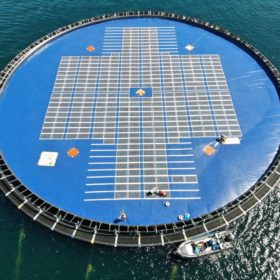Scatec to drop the ‘Solar’ with hydro acquisition
The renewables business is set to acquire the SN Power hydropower operator belonging to Norwegian state-owned private equity business Norfund, with the $1.17 billion deal expected to go through in the first half of the new year. Scatec said the transaction could offer floating solar opportunities.
Norwegian floating PV specialist Ocean Sun plans IPO
The company aims to raise NOK100 million by going public. It will use the funds to expand its overseas operation and reinforce engineering resources in Norway.
An optimistic – but realistic – perspective for sodium batteries
International researchers have analyzed the potential of sodium-based energy storage and found recent technical advances have arrived faster than those for the lithium-ion batteries which have been studied for three decades. Issues remain, however, before sodium constitutes a complementary option to lithium.
Plans for Norwegian graphite battery factory
Norwegian polysilicon maker and silicon business Elkem is planning to build a manufacturing facility in Herøya.
Covid-19 weekly round-up: Updates shed light on tough second quarter for solar industry firms
But Israeli inverter company Solaredge and Indian engineering, procurement and construction services provider Sterling and Wilson have both offered hope of a recovery in Europe as Chinese glass producer Xinyi said it kept the furnaces going throughout the worst of the pandemic.
REC Silicon sells off last remnants of Moses Lake polysilicon
The Norwegian company mothballed its Washington State facility more than a year ago and is now reliant on semiconductor-grade poly and silane gas produced at its fab in Butte, Montana – a facility for which the business says it has received plenty of interest from potential purchasers.
Northvolt secures $1.6bn backing for twin battery gigafactories
In a little over ten years, Northvolt aims to pour 150 GWh of batteries onto the European market, annually. The company is also working to source end-of-life batteries for half its raw materials.
Covid-19 weekly round-up: Q Cells has given a timely boost to EU solar as the clamor grows for a green recovery
Plus, there was plenty of hope in predictions made by Norwegian institute DNV GL but U.S. households are facing hefty energy bills just as data from Delhi showed the link between industrial shutdowns and cleaner skies.
Seasonal storage: alternatives to the alternative
In an update to a report it published earlier this year, Norway-headquartered consultancy DNV GL outlined the role it sees for both seasonal heat storage and pumped hydro to help manage the 1.4 TW of variable renewable energy capacity it forecasts to be connected to European electricity grids by 2050. DNV GL maintains the original report’s conclusion that where seasonal storage is concerned, hydrogen will be the first option.
IEA report appears to acknowledge 2050 net zero may be beyond us
A study into the clean energy tech innovation rate required to keep global heating under control may suggest concepts such as lithium-air could yet keep us to the mid-century ambition, but it is also starting to contemplate the temperature rise to be expected if we only achieve net-zero by 2070.










